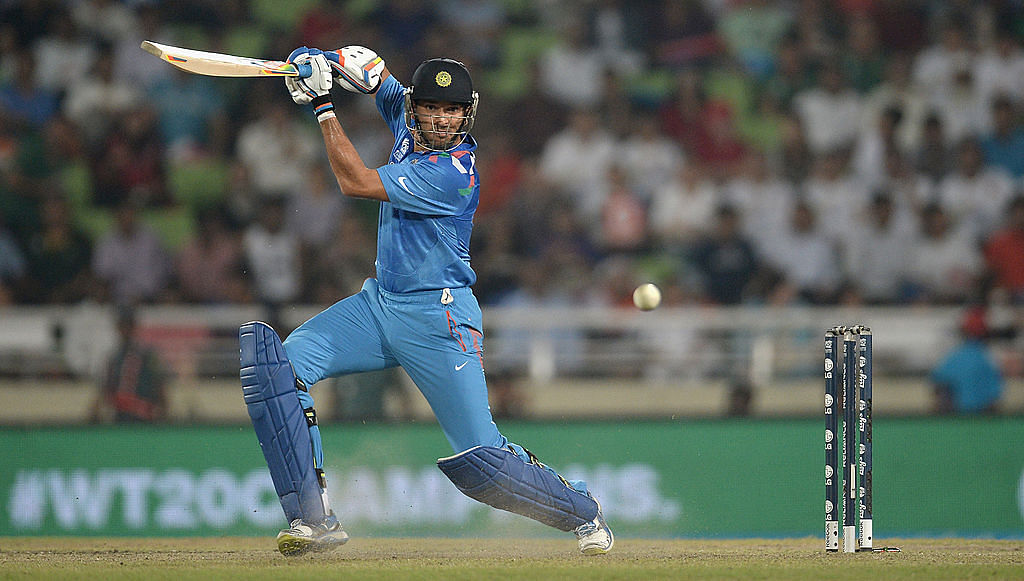×
ADVERTISEMENT
ADVERTISEMENT
ADVERTISEMENT
India tours of Australia: Best knocks played by Indian batsmen in 2 decades
India's 2020 tour of Australia gets underway from Nov. 27. As fans gear up to witness an intense battle between the teams, let's look back at some of the most memorable knocks played by Indian batsmen in Australia in the last 20 years. Of course, there are many excellent knocks to choose from, as India, over the years, have been blessed with batsmen of the highest calibre. This list highlights some of the most brilliant knocks but unfortunately, many had to be excluded. Let's go down memory lane and begin the debate.

It was match 7 of the 2004 VB series. India won the toss and elected to bat first. Soon, Australia reduced them to 80/3 on a fast Sydney track. Yuvraj Singh and VVS Laxman then steadied the ship. Yuvraj, who was still transforming into a fine ODI batsman with exceptional talent, attacked the Aussie bowling and played a sublime innings of 139 off 122 balls. VVS Laxman ably supported him with a fine 106 off 130 balls. Credit: Getty Images
ADVERTISEMENT
.jpg)
It was the third Test on the 2003-04 tour of Australia. India won the toss and elected to bat first. They scored 366, a modest total that was highlighted by Virender Sehwag's 195 of 233 balls. Though the pitch was relatively easy to bat on and the Aussie bowling line-up did not have the services of Glenn McGrath and Shane Warne, no other Indian batsman was able to cross 50 runs. Sehwag scored more than 50% of the team's total and the knock is still regarded as one of the best innings played by an Indian batsman in Australia. Credit: Getty Images

Virat Kohli's 141 against Australia in 2014 can be best described as a fighting knock. In the first Test in Adelaide, Australia set India a target of 364 to win with a day remaining. Kohli, who was leading the side, raised a few eyebrows when he decided to go for the win. India lost Shikhar Dhawan and Cheteshwar Pujara with 57 on the board but Kohli did not give up. With Murali Vijay as his partner, Kohli counter-attacked. Even after Vijay (99) fell with India at 242, Kohli refused to slow down. India ended up 48 runs short of the target but Kohli's innings was applauded by everyone. Credit: Getty Images
.jpg)
It was the first final of the 2008 Commonwealth Bank Series. Australia won the toss and elected to bat, looking to put the 'scoreboard pressure' on India. Instead, they were restricted to 239, thanks to India's superb all-round bowling performance. A target of 240 can be challenging in a final, especially against Australia at home. At 87 for 3, India were nervous. However, Sachin Tendulkar was still there. As he has done so many times in his career, Tendulkar single-handedly dismantled the Aussie bowling and guided India home with an unbeaten 117 off 120 balls. Credit: Getty Images

It was 'The Wall' all the way in the second Test in 2003. When India was tottering at 85 for 4 in their first innings in reply to Australia's massive 556, it was widely thought that the match was as good as gone. However, VVS Laxman and Rahul Dravid turned back the clock and slowly began to drag India to a respectable position. When Laxman departed after scoring 148 off 282 balls, India were still 168 runs adrift of Australia's total. Dravid could not be stopped, however, and carried on. His impeccable 233 helped India to reach 523. Notably, Dravid was the last to fall in that innings. While chasing 230 to win in the second innings, Dravid was rock-solid again with an unbeaten 72 to take his team over the finishing line. It remains to date one of India's most famous overseas Test wins. Dravid was correctly named the Man of the Match for his performances. Credit: Getty Images
.jpg)
It was 2019. India trailed 0-1 in the three-match ODI series in Australia. The second ODI in Adelaide was a must-win for the Men in Blue but Australia were in the mood to seal the series and posted 298. It was a huge score in those conditions where the boundaries are big and the pitches are fast when batting first. India, however, had one of the greatest chasers in limited-overs cricket at their disposal and Virat Kohli rose to the occasion. Kohli's innings of 104 off 112 balls was filled with singles and doubles, a hallmark of his batting style. Later, M S Dhoni's unbeaten 55 sealed a chase that is considered one of the finest pursuits ever in ODI cricket. Credit: Getty Images

During the 2003-04 Test tour, Sachin Tendulkar was taunted for his lack of form (he was out for a duck twice in five innings). The 'Master Blaster' was also criticised for getting out while trying to play his famous cover drive. And so, as the story goes, the great batsman made a decision not to play the shot before the fourth and final Test in Sydney. And indeed, Tendulkar did not play the drive until he reached his century in the first innings. He still unleashed a wide range of shots against an Australian attack that lacked the brilliance of Glenn McGrath and Shane Warne. He went on to score an unbeaten 241, which is to date the highest score by an Indian in Australia. Credit: Getty Images
ADVERTISEMENT
Published 21 November 2020, 07:49 IST
Virat KohliAustraliaIndiaVirender SehwagSachin TendulkarMahendra Singh DhoniRahul DravidShane WarneGlenn McGrathVVS LaxmanBrett Lee
Deccan Herald is on WhatsApp Channels| Join now for Breaking News & Editor's Picks
ADVERTISEMENT
ADVERTISEMENT